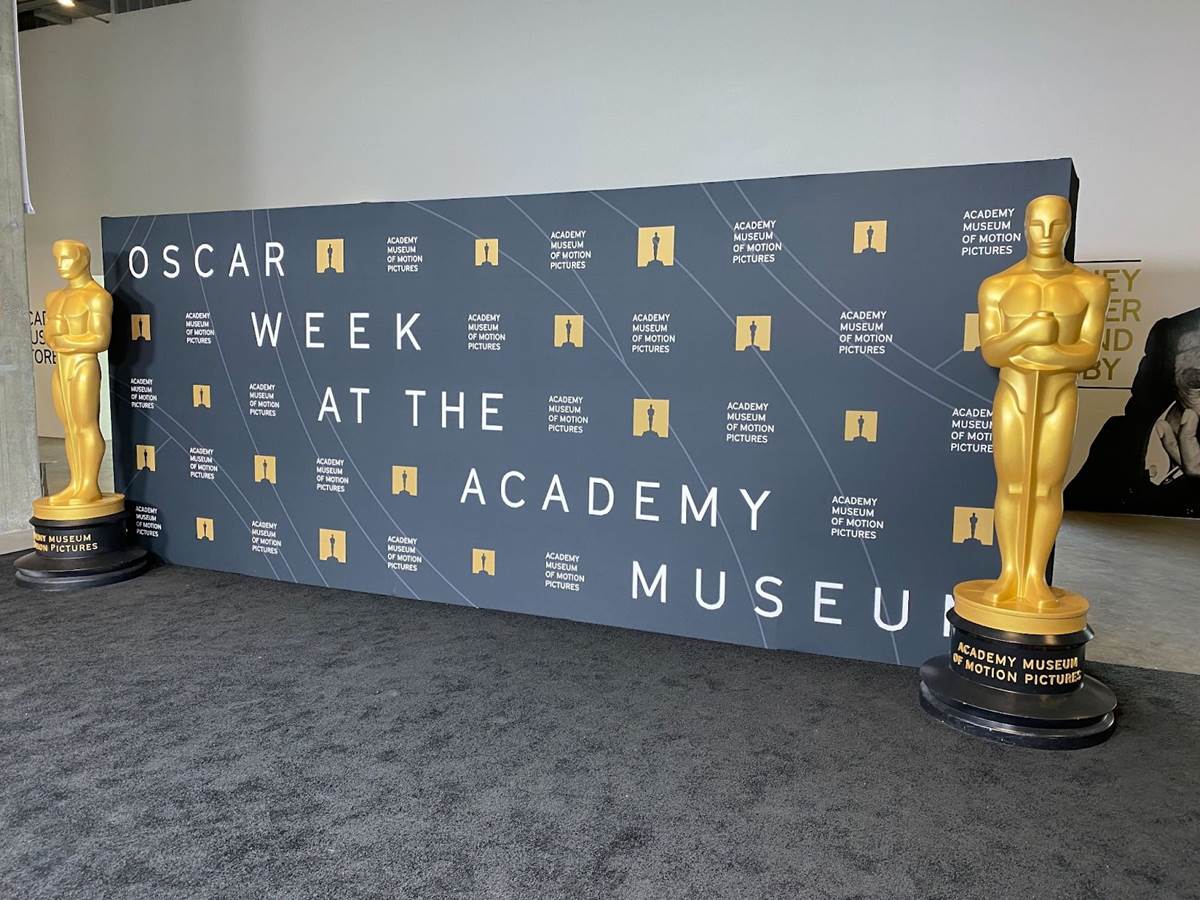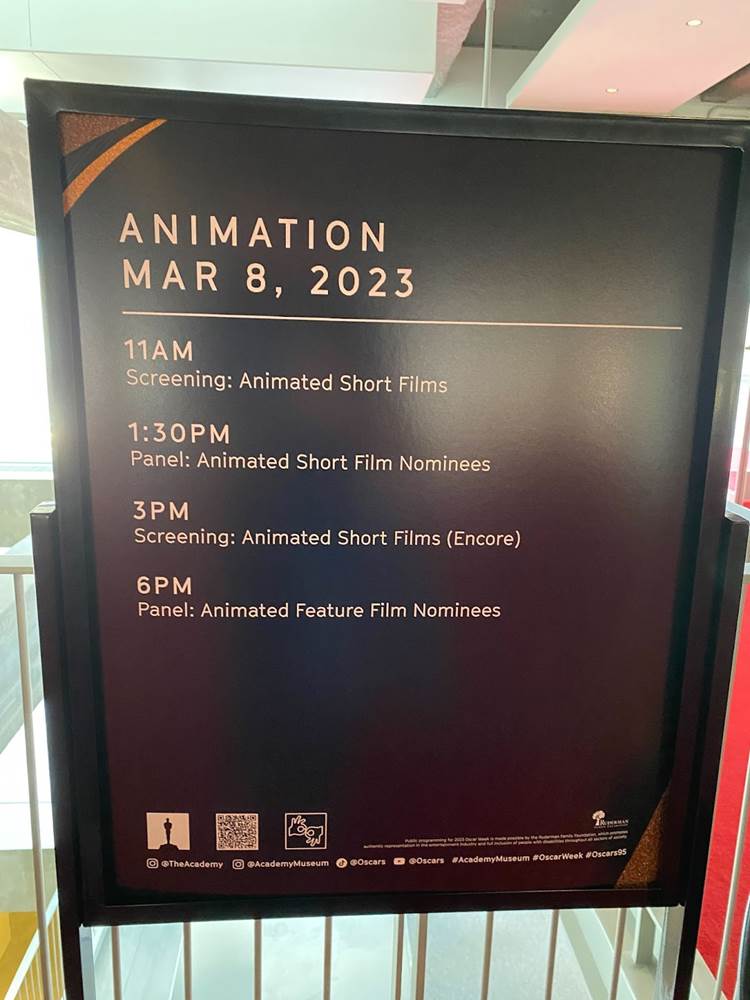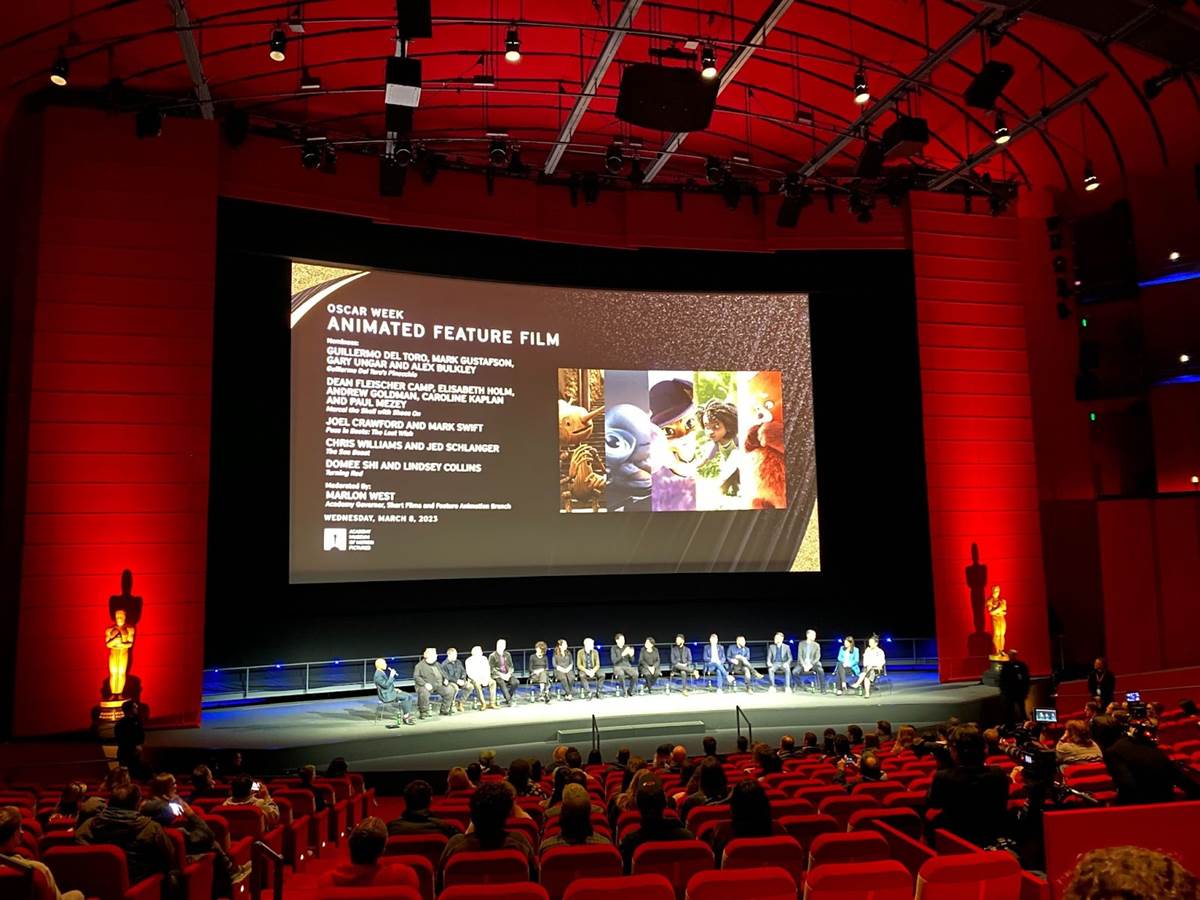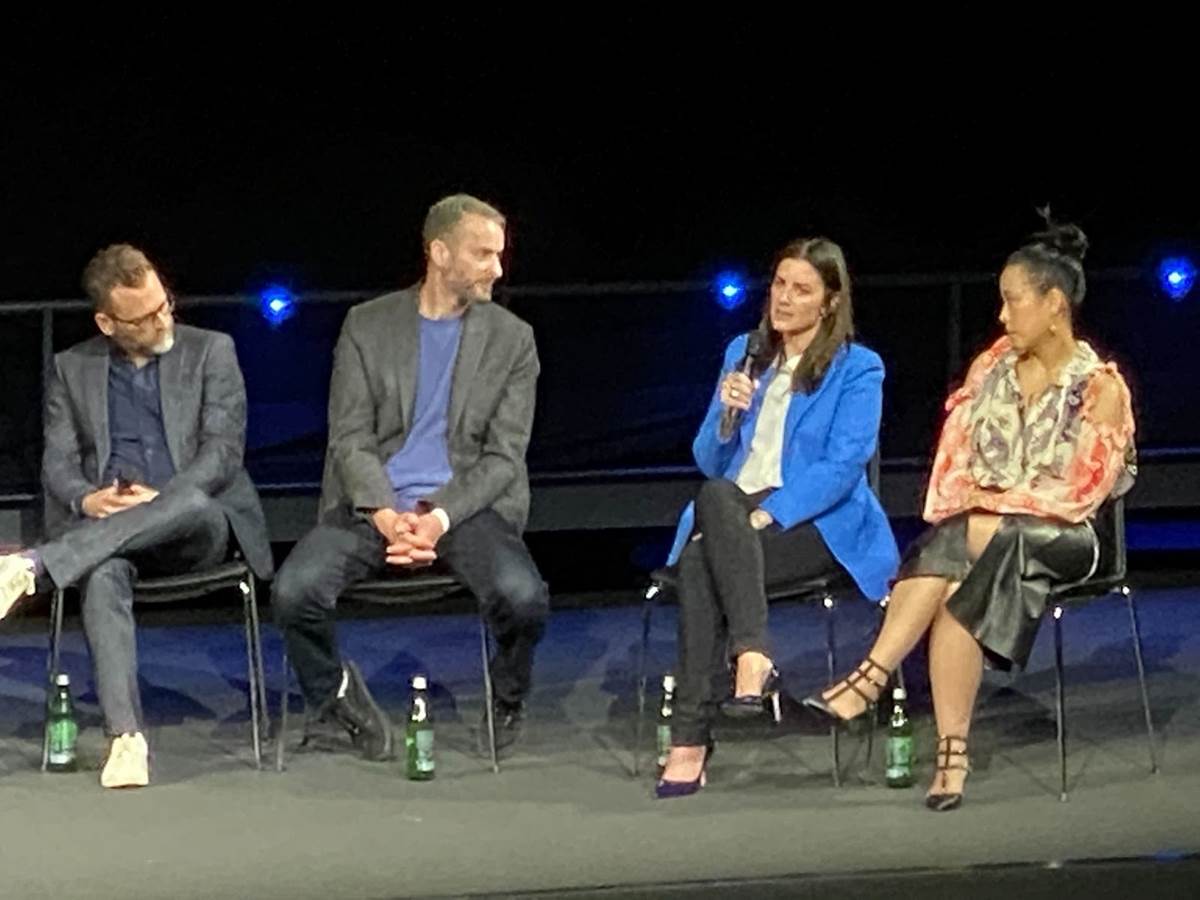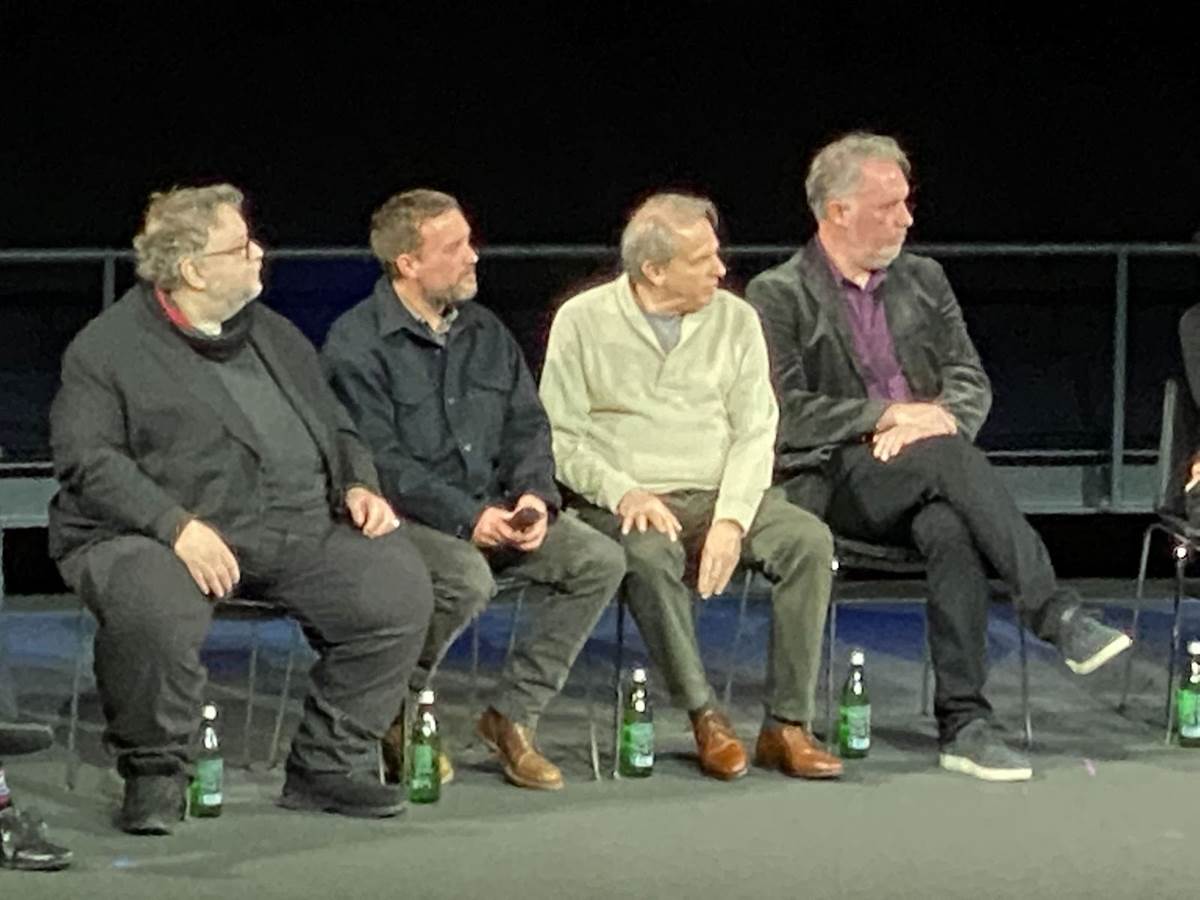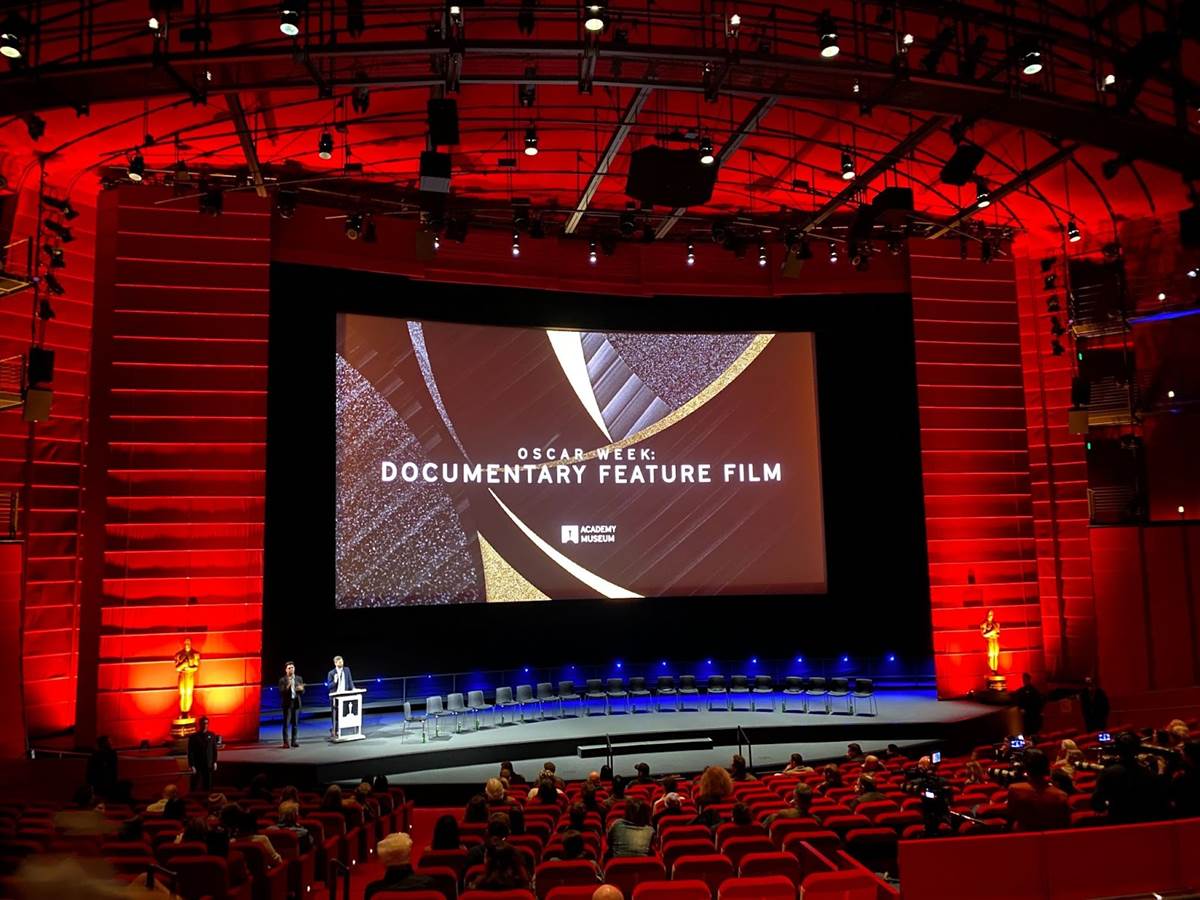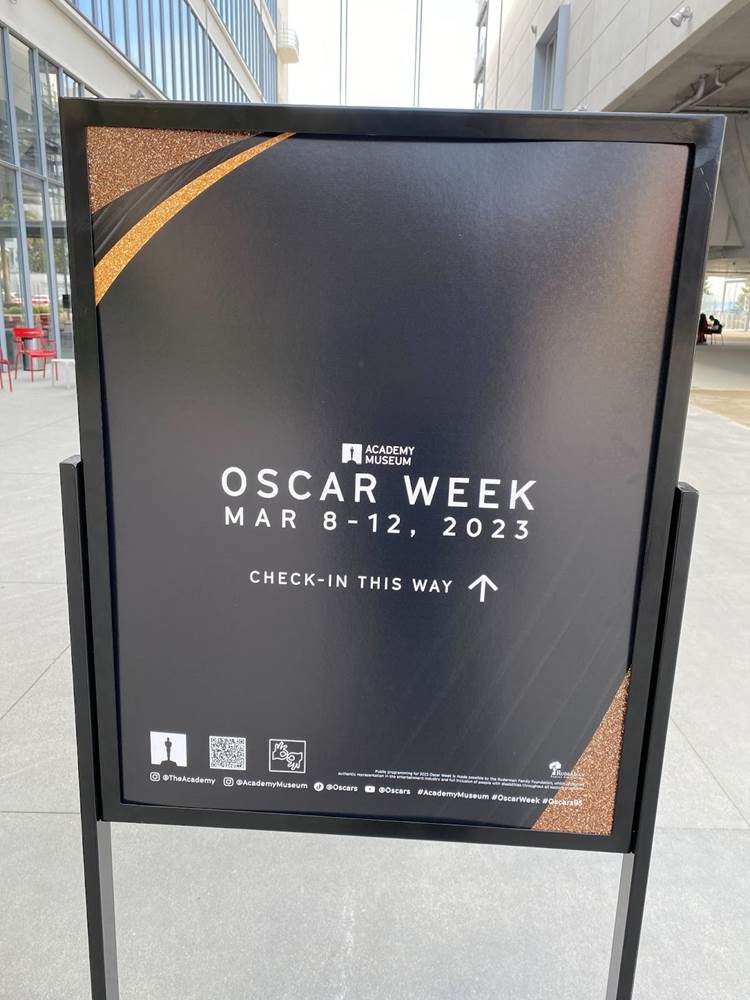Event Recap: Academy Museum Hosts Panels for Best Animated and Documentary Feature Nominees for 2023 Oscars
It’s Oscar week in Los Angeles, and as we build up to the big Academy Awards event on Sunday at the Dolby Theatre in Hollywood, the Academy Museum of Motion Pictures is hosting its first-ever series of panel discussions for this year’s nominees.
On Wednesday and Thursday this week, I had the pleasure of attending the fascinating panels for Best Animated Feature and Best Documentary Feature, both of which included films that were distributed by The Walt Disney Company.
Wednesday was animation day at the Academy Museum, and I was excited to watch the screening of all five Best Animated Short nominees, though Disney was not represented in that particular category. But when it came time for the discussion of the Best Animated Feature nominees, it was wonderful to see Domee Shi and Lindsey Collins, the director and producer of Pixar’s Turning Red, on stage to talk about the film. Joining them were the creators of Netflix’s The Sea Beast, DreamWorks Animation’s Puss in Boots: The Last Wish, Focus Features’ Marcel the Shell with Shoes On, and Netflix’s Guillermo del Toro’s Pinocchio. Moderator Marlon West (a Disney animator and VFX artist himself who contributed to Moana, Atlantis: The Lost Empire, and The Princess and the Frog, among numerous others) began the discussion by asking the filmmakers in attendance about their individual struggles to get their movies made.
Domee Shi talked about her work on the Pixar short Bao and how she channeled her relationship with her mother into her storytelling. She also discussed how proud she is of the female leadership that went into creating Turning Red. The Sea Beast director Chris Williams mentioned having been at Walt Disney Animation Studios for 25 years, and how his love of films in the action/adventure genre like Raiders of the Lost Ark helped shape his movie. Puss in Boots: The Last Wish directors Joel Crawford and Januel Mercado discussed how their film was inspired by the idea of realizing you only have one life to live, which was represented by the title character being on the last of his nine lives. The director of Marcel the Shell with Shoes On, Dean Fleischer Camp, is currently making the Lilo & Stitch live-action movie for Disney, so he couldn’t be present at the event, but his collaborators talked about how Marcel originated as a stop-motion animated short and how they wanted to make the title character feel incredibly human. Then it was Guillermo del Toro’s turn to speak about his take on Pinocchio, commenting on why he wanted to do it, and what he felt he had to say that was new with the material. He also mentioned what an amazing year it was for stop-motion, with Henry Selick’s Wendell & Wild and Phil Tippett’s Mad God also having been released.
The next part of the discussion turned to the challenges of making these movies during the COVID-19 pandemic, which spurred a very funny anecdote from Lindsey Collins about having an argument with her kids while on a Zoom call from home with her production team. The Sea Beast’s producers added to that by remarking that their kids got an invaluable education in filmmaking by watching the behind-the-scenes process from the comfort of their own homes. The producers being Puss in Boots said that it definitely helps the creative process to be in a room together, though working from home has been very hard to avoid over the past few years. According to its producers, Marcel the Shell with Shoes On took on much more meaning throughout the pandemic because the main character is so isolated, and the Pinocchio producers talked about how so many of their crew members stepped up to fabricate the stop-motion puppets and props from their homes.
Lastly, the filmmakers were asked about any technical hurdles they had to overcome during the production of their movies, to which the Turning Red creators said that Domee Shi’s personal style was almost counter to the Pixar house style. The studio had to teach itself to adapt to Shi’s anime influence: “It’s quite difficult to do things simpler," said Collins. They also talked about the difference between current Pixar creative lead Pete Docter and his predecessor John Lasseter– Docter pushes things visually, while Lasseter would always pull them back, but without Lasseter at the company Docter has found himself in the opposite role. “As long as there’s a reason for it in the story, I’m on board," they quoted Docter as having said. Shi described the unique style of Turning Red as “Asian Tween Fever Dream," and expanded on the mash-up of Japanese anime and western animation influences. As someone who felt caught between eastern and western worlds growing up, she felt this hybrid style would be appropriate for her first feature film. Then the creators of The Sea Beast talked about the difficulty of animating ropes and sails, the Puss in Boots filmmakers discussed their movie’s fairy-tale painting backdrops, and the Marcel team said that everything about their film was hard to accomplish, but that they considered the final product successful because so many people had mentioned that they couldn’t tell whether it was animated or not. Lastly, Gullermo del Toro talked about how he wanted the faces of the Pinocchio puppets to be manually controlled and not have pre-printed templates. He also spoke on the value of his animators and how they were told they were going to be treated (and credited) as the cast of the film, instead of as technicians like they ordinarily would. “Animation is cinema," concluded del Toro. “It is not eye candy; it’s eye protein."
Then yesterday it was time for the presentation on the Best Documentary Feature nominees. In attendance were the filmmakers behind Warner Bros. Pictures’ Navalny, Giant Pictures’ A House Made of Splinters, the Disney-owned National Geographic Documentary Films’ Fire of Love, HBO Documentary Film’s All the Beauty and the Bloodshed, and Sideshow’s All That Breathes. The panel began by talking about the ideas came about for each film, the topics of which range from air pollution in New Dehli (All That Breathes), activist Nan Goldin (All the Beauty and the Bloodshed), a rehabilitation center for children in war-torn Ukraine (A House Made of Splinters), the human relationship with volcanoes (Fire of Love), and a profile of Russian opposition leader Alexei Navalny (Navalny).
The documentary filmmakers on-hand discussed challenges with encrypting data, language barriers, working with vulnerable children, keeping each of their individual films alive during the pandemic, and venturing into embattled nations to capture their footage. They also talked about the varied roles of producers on documentary films, and there was a pretty hilarious moment where one of the directors was able to eloquently answer a question posed about one of the other films because of how much time these creators have been spending together in the lead-up to this weekend’s Oscars ceremony.
Oscar Week continues at the Academy Museum of Motion Pictures this weekend with the nominees for Best Live-Action Short and Best Makeup and Hairstyling, including the Disney-distributed short Le pupille and Marvel Studios’ Black Panther: Wakanda Forever. Stay tuned for more coverage right here at LaughingPlace.com.

